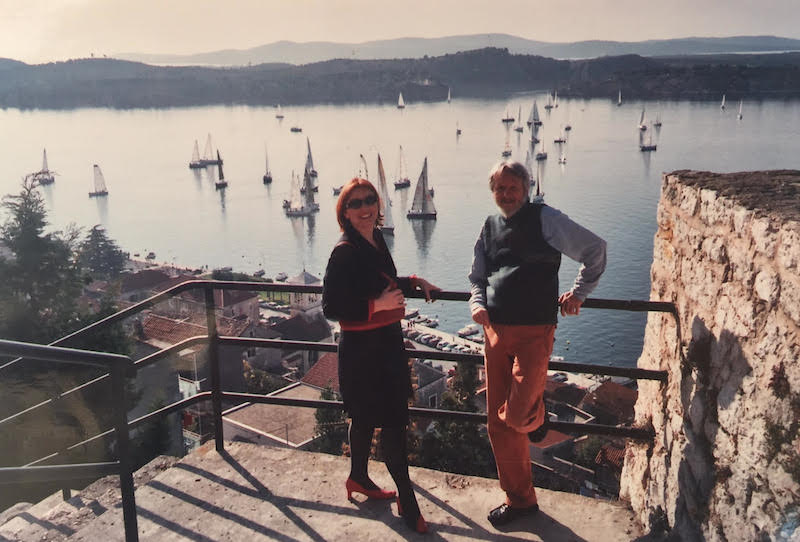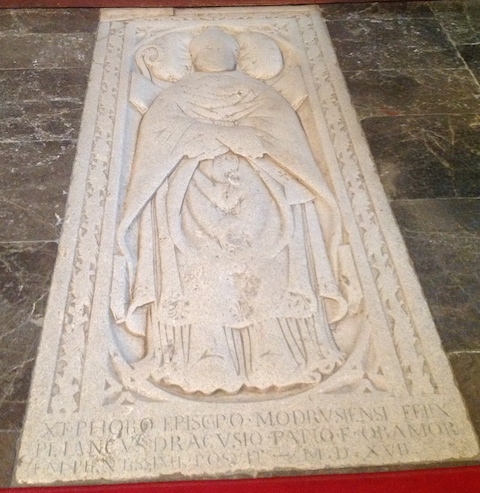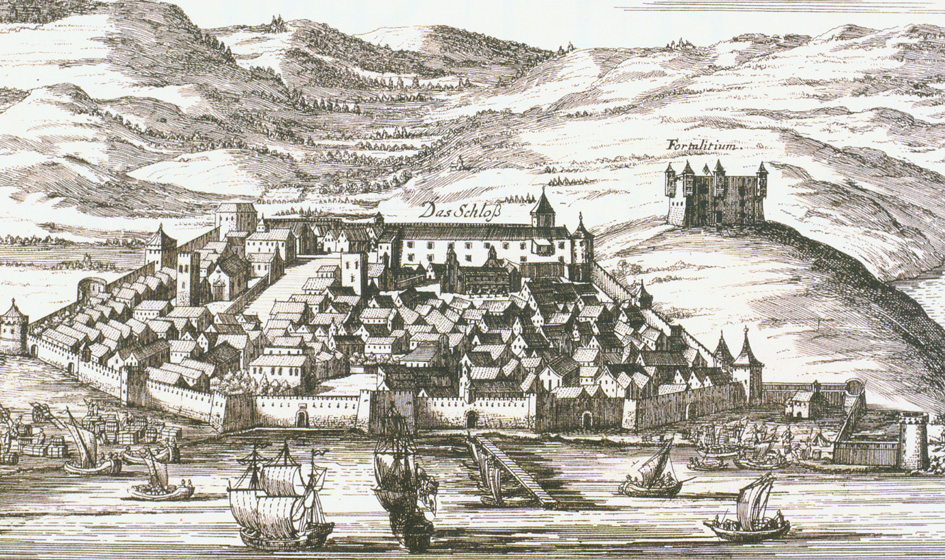
Sponsored Ads
|
» Home
» Croatian spirituality » Hrvojka Mihanovic-Salopek: Veneration of the Blessed Virgin Mary in the Diocese of Gospić-Senj
» Home
» Poetry » Hrvojka Mihanovic-Salopek: Veneration of the Blessed Virgin Mary in the Diocese of Gospić-Senj
» Home
» Education » Hrvojka Mihanovic-Salopek: Veneration of the Blessed Virgin Mary in the Diocese of Gospić-Senj
» Home
» Culture And Arts » Hrvojka Mihanovic-Salopek: Veneration of the Blessed Virgin Mary in the Diocese of Gospić-Senj
» Home
» Religion » Hrvojka Mihanovic-Salopek: Veneration of the Blessed Virgin Mary in the Diocese of Gospić-Senj
| Hrvojka Mihanovic-Salopek: Veneration of the Blessed Virgin Mary in the Diocese of Gospić-Senj |
| By Nenad N. Bach and Darko Žubrinić |
Published
05/4/2019
|
Croatian spirituality , Poetry , Education , Culture And Arts , Religion
|
Unrated
|
|
|
|
Our Mother of Consolation
 Hrvojka Mihanović-Salopek and Alojzije Prosoli in the city of Šibenik
Hrvojka Mihanović-Salopek, Zagreb
Our Mother of Consolation
Veneration of the Blessed Virgin Mary in the Diocese of Gospić-Senj
We often travel to the Adriatic coast through the spacious, desolate, forested and mountainous expanses of Lika, without being aware that there used to be a highly developed center of medieval Croatian culture and Glagolitic scriptoria. Although the brutal Ottoman invasions wrought devastation, we are attracted to the residual traces of the original old Croatian civilization.
Dr. Hrvojka Mihanović-Salopek: Lička Majka od Utjehe
(The Lika Mother of Consolation), 11th DVD dealing with Croatian Mariological Heritage. Production Real grupa d.o.o., Udruga Prosoli - Sveta Glazba (Musica Sacra) Producers Alojyije Prosoli and Krešmir Renzo Prosoli
Back in the year 1185, the Diocese of Lika with its episcopal see in Krbava, today's Udbina, was established at the Archdiocesan Synod in Split, as recorded by the historian Daniele Farlatti in Illyricum sacrum. A 13th-century gold cross belonging to the bishops of Krbava, with an inscription stating that it was fashioned in honor of Saint Mary, has been preserved. Our Lady was often the sole source of consolation during the period of ruthless Ottoman conquests in this region. The former Franciscan church in Udbina dedicated to Our Lady was destroyed in the aftermath of the tragic Battle of Krbava Field in 1493. A moving description of the battle was recorded in Glagolitic script by the priest Martinac in the second breviary of Novi, dated 1495. Near the archaeological excavations of the former cathedral of St. James, dating from the 13th century, a new shrine has been built overlooking Krbava Field as a lasting monument to the casualties of the Battle of Krbava Field and the many subsequent Croatian defenders. It bears the name of the Church of the Croatian Martyrs, in commemoration of all the known and unknown persons who defended the homeland and faith with their lives. The idea to build this church was conceived by Bishop Mile Bogović. Construction on the church was completed in 2015 with the installation of a relief entitled The Glory of the Croatian Martyrs.
M. Bogović: "In the 1980s, I went on foot with archaeologists throughout all of Lika and Krbava in search of old monuments, from the medieval period or even older. When we came here to Krbava Field, we expected to find some kind of monument to the tragedy that occurred here on September 9, 1493. However, we could find no sign of it at all on Krbava Field. Then Kruhek, Horvat and others of us asked ourselves whether the time would ever come when we could raise a monument to those who had fought and died for Croatia. When Croatia achieved independence and the Republic of Croatia was established, we continued this discussion and asked ourselves whether it was time to begin something. Then we selected a design inspired by the [medieval] Church of the Holy Cross in Nin. That is how here, on Krbava Field, we planned a pan-Croatian grave for the excavated remains of all those whose bodies had been thrown into pits, a place where they could be buried and where we could pay our respects, honor and express our gratitude at long last."
(Brothers, We Are Burying Our Brother, medieval Old Slavonic hymn)
| Pilgrims visiting the Church of Croatian Martyrs in Udbina, Lika.  Bishop dr. Mile Bogović The town of Brinje in Lika, the Middle Age Frankapan fortress on the right.
Among the most illustrious Glagolitic scribes and calligraphers was Bartol of Krbava, who illuminated missals, many of which ended up outside Croatia during various wars or were not preserved in their entirety. In Krbava, Bartol illuminated the Berlin Missal in 1420, commissioned by Vlk, the abbotâs nephew, as well as the Beram Missal dated 1421, and the Roč Missal illuminated in the 15th century for an Istrian church in the town of Roč. Furthermore, in 1407, a Glagolitic breviary was brought from Krbava to Draguć.
Owing to the threat of Ottoman invasion, Pope Pius II, at the instigation of Prince Stjepan Frankopan, moved the episcopal see from Krbava to the town of Modruš in 1460. The Diocese of Krbava-Modruš was under the patronage of the Frankopan princes. The most famous bishop of the Diocese of Modruš was Nikola Modruški, 1461-1480, a Latin writer and eminent bibliophile, whose huge library is today housed in the Vatican Library. The importance afforded to the veneration of Our Lady in the Lika region was evidenced by the construction of the Cathedral of Saint Mary in Modruš, which was later destroyed by Turkish invaders. The Urbarium of Modruš, a legal document regulating relations between feudal lords and vassals, was prepared at the direction of Prince Bernadin Frankopan in 1486. The copying of the Glagolitic manuscript Tkon Collection / Tkonski zbornik began during the reign of the same prince. It includes the poem Mary, Save Your Faithful/Spasi Marije tvojih vernih and testifies to the peopleâs anguish following the Battle of Krbava Field.
The orphaned children wail
In the wake of ferocious Turkish brutality,
And wherever they go
They mourn their loved ones.
Virgin Mother of God, save us
From such a sorrowful end.
We have no hope
Except in you, Mother of God.
|
Modruš (Modrussia)
Until the end of the 15th century, the Frankopan princes possessed an 11th-century codex written on parchment, Glagolita Clozianus. The Missal of Duke Novak represents an exceptional specimen of calligraphy that Novak Disislavić, a knight from Ostrovica in Lika, illuminated in 1368. The missal lettering was the model for the first printed Croatian book in 1483, Missale Romanum Glagolitice, believed to have been printed in Modruš or Kosinj. In 1491, the Breviario Glagolitico was printed in Kosinj, which testifies that Gutenburg's invention was quickly adopted in Lika. In 1528, Fra Pavao Modrušanin had a Glagolitic missal printed in Venice. In 1493, the last bishop of Modruš, Kristofor Dubrovčanin, had to leave Modruš and move to Novi Vinodolski, where he lies buried. He was able to save the bishopâs crosier of the former Diocese of Krbava-Modruš from looting by the Turks, who forever altered the Lika cultural heritage.
Academician Stjepan Damjanović: "The Lika and Krbava region is one of the traditional Croatian Glagolitic regions. It was ruled in its entirety or in parts by the noble Frankopan and Kurjaković families, who were known proponents of Glagolitic script, Old Church Slavonic chant, Old Church Slavonic liturgy and so forth. The most distinguished groups of texts are the liturgical texts. From this region, seven complete missals and six breviaries have been preserved, a total of thirteen beautifully illuminated medieval codices, which testify in various ways to the high cultural level in this region."
|
 The grave of the Modruš bishop Kristofor (Xtophoro episcopo Modrvsiensi) in in the church of Sv. Filip i Jakov (St. Philip and Jacob) in Novi Vindolski.
Verses from a sequence in the first book printed in Glagolitic script testify that the faithful regarded Mary as their hope and paragon: "Star of the Sea, brightly shining with the light of all the stars."
The leading Marian shrine in the former Diocese of Krbava-Modruš is the Church of Saint Mary of Miracles in the village of Oštarije in Ogulin. In 1459, Pope Pius II issued a bull with special indulgences, after which Prince Stjepan II Frankopan Modruški had a sixty-meter long, three-nave Gothic church built, which was burned by the Turks in 1521. For a long time, its ruins served as a military fortress. In the 17th century, the intact apse became the nave of the church. The present church, considerably smaller than the original, was designed by Josip Vancaš and Stjepan Podhorsky in the late 19th century. Today, only the outer walls and Gothic entrance indicate the dimensions of this former Gothic basilica. Within the shrine, on the main altar is a baroque statute of the Madonna with Jesus, sheltering the faithful with her cloak. In this statue, Our Lady is represented as the helper, advocate and protectress of mankind. At one time, Oštarije was on a pilgrim and trade route from Senj via Modruš, to Dubovac and Zagreb. At the junction of northern and southern Croatia, a Marian church preserves the history of the Lika region.
|
 Kosinj breviary, Croatian glagolitic incunabulum printed 1491. The only preserved copy is kept in the National Library of St. Mark (Marciana) in Venice. Kosinj valley, of about 5 km of length, is probably the most beautiful valley in Croatia.  Donji Kosinj, Rudinka
Not far from Ogulin, on a hill rising between the Dobra River and Ribnjak Brook, is a very old shrine of the Ogulin Deanery, the Church of Mary of Consolation, popularly known as Trošmarija, derived from the German Maria Trost. Not far from medieval ruins, today's church was dedicated in 1755 and in 1767 was used by the Confraternity of Our Lady. In 1767, Pope Pius VI granted a special indulgence to those making a votive pilgrimage to this shrine. In 1943, this Marian church was severely damaged when the parish rectory was intentionally set on fire. During the communist era, attending church here was considered extremely undesirable. The poet Velimir Deželić, Sr., described the turbulent fate of this Marian church in the collection Queen of the Croats:
In a vortex of pain, where steep cliffs,
All crowned by thick, ashen clouds,
And canyons fill with horrendous stench,
In eerie fear the riven soul droops,
In a vortex of pain, in the fiery flame,
Mother of Consolation, stay, stay with me!
The deep Dobra Canyon dives down into Đula's (Julia's) Abyss. In the late 15th century following the fall of Modruš, Prince Bernardin Frankopan built a fortress on the top of a cliff, which eventually developed into today's Ogulin. Starting in 1570, this was the headquarters of the Thirteenth Border Regiment that fought against the Turkish invaders. Today, there is a museum of local history. Next to the museum is the Chapel of St. Bernard with the tomb of Prince Bernardin Frankopan. In 1781, construction began on the present Church of the Holy Cross. On the main altar is a crucifix and the figure of Our Lady of Sorrows. On the side altar is a painting of Our Lady trampling a serpent, a symbol of evil. The crystalline waters of the rivers Dobra and Mrežnica course through the Ogulin Deanery.
| 
The city of Senj (Senia) on Croatian coast. Left to it is the Fortress of Nehaj.
Churches were always built in the vicinity of the beauties of nature. In Lešće on the Dobra River, Our Lady of Help is venerated. In the Church of St. Nicholas in Lipa, near the Mrežnica River, is a side altar dedicated to Our Lady of Carmel. On the Tounjčica River is a bridge from Roman times, where the ancient town of Tounj used to be located. Among the most beautiful churches of the Ogulin Deanery, the Church of St. John the Baptist in Tounj, designed by the architect Hermann Bolle, was built in 1892, with a side altar dedicated to Our Lady. In Zagorje, Ogulin, in the territory of the Parish of St. George, is the little Church of the Nativity of Mary in Kaševari, dating to the 16th century.
The seat of the Deanery of Slunj is located in the town of Slunj, mentioned for the first time by name in 1390, in a document issued by Prince Ivan Frankopan of Krk. It is located where the Slunjčica River flows into the Korana River and is known for its thirty remarkable waterfalls. The town of Rastoke has preserved numerous old mills. From 1449 to 1572, Slunj was administered by the Frankopan princes, who built a fortress there. Subsequently, Slunj became a royal estate and was entrusted to Viceroy Charles of Habsburg. Franjo Frankopan Slunjski served as ban together with Bishop Juraj Drašković, and is celebrated in poetry for having bravely defended Croatia from the Turkish Empire. Until 1578, there used to be an old Franciscan monastery here. Fra Franjo Glavinić wrote how the last friar, Bernardin Lopušić, saved a statue of Our Lady of Slunj from the Turks and brought it to Trsat. Our Lady of Slunj is the patron saint of migrants and the persecuted faithful. On the ruins of the Franciscan monastery, todayâs Church of the Holy Trinity was built in 1726, where we find an altar dedicated to Our Lady. There is also the tomb of the Frankopans of Slunj, with the inscription Jacet in tumba Magnificus. A gilded statute of Our Lady has been preserved, which was presented as a votive offering by the head of the royal military command in Karlovac, Mate Magdić of Slunj, in the 19th century.
|
Please, go to the next page below.
|
|
|
|
|